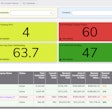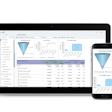
At Autodesk University next month in Las Vegas, construction attendees will see and interact with Autodesk customers from other sectors, including those in the media and entertainment sector, some of whom stand out due to their more flamboyant dress.
While the entertainment sector professionals may be conspicuous, Autodesk revenue from architecture, engineering and construction (AEC) including Revit and Autodesk Build (part of Autodesk Construction Cloud), were responsible for almost $2.3 billion in revenue for the most recent annual reporting period, according to the company’s Form 10-K for the fiscal year ending January 31, 2023. That was almost ten times revenue from media and entertainment and more than twice revenue from manufacturing.
Autodesk Build is a connected set of project management and collaboration tools for the construction industry. Central to this functionality is the ability to manage, share and access project documents for streamlined workflows between the office, trailer, and jobsite. Autodesk Build functionality broadly addresses:
- Quality and safety of the project with issues and forms
- Requests for information (RFIs)
- Submittals
Data flows from the back office to the field through the Autodesk Construction Cloud mobile app, which came into the product from PlanGrid. Through these and other pathways, Build connects data originating in design and preconstruction construction processes helping contractors identify, manage and mitigate risk.
Revit is Autodesk’s Building Information Modeling (BIM) authoring tool used by architects, engineers, and construction firms can collaborate to make better informed decisions earlier in the design process to deliver projects with greater efficiency. Revit includes features for:
- Architectural, mechanical, electrical, and plumbing design
- Structural engineering
- Construction
New in Autodesk Construction Cloud
Autodesk’s applications and platform are modern and broad, approaching the industry from a document and collaboration level with Autodesk Forma (announced at Autodesk University in 2022) to transactional processes in construction with Autodesk Build. But the product line is not static, and continues to evolve with regular significant product enhancements.
In a September blog post, Autodesk Construction Cloud shipped a slough of new functionality aimed at also announced new functionality for project team decision support as they prioritize tasks, assess tradeoffs and validate assumptions.
Included in this update is the Correspondence product, which aggregates email communication, harvesting project-related documents and correspondence directly from email clients like Outlook or Gmail. This makes Correspondence a tool for project management and documentation but also in a forensic audit to document commitments made and information relayed. And it drives Autodesk Construction Cloud deeper into the territory of a partner—Newforma’s Project Information Management (PIM) applications similarly capture and catalog project correspondence including emails and recently added the ability to facilitate model sharing and collaboration.
Model Quality Workflows brings to the platform tools to package data from design into construction-ready models. Using Model Quality Workflows, users can curate data to provide more relevant and usable ways for contractors to engage with it.
Rounding out the update, Sheets Collection streamlines project document management inside Autodesk Construction Cloud and eliminating the need to create and own multiple projects or prefix sheet names for a single job. Sheets are accessible to teams in the office and field for larger multi-building projects.
Now available according to company sources is Bridge for Closed RFIs, which will expand access to closed RFIs across projects or accounts using Autodesk Bridge.
According to Senior Director of Global Customer Success for Autodesk Construction Solutions Brandon LaCourciere, these new capabilities will be of direct interest and applicable to not just generals but self-performing contractors.
“Self-performing contractors already benefit from having greater control over the quality and schedule of delivery of their work,” LaCourciere said. “With new features in Autodesk Construction Cloud, they can better manage central information flows to ensure that projects stay on time and on budget.”
BOTTOM LINE: Autodesk Construction Cloud and Autodesk Build continue to roll out new functionality—proof the company came to play ball in construction and compete with the likes of Procore for the work-in-progress portion of construction lifecycles. This new functionality in cases like Correspondence (Newforma) and Embodied Carbon in Construction Calculator (EC3) (Green Badger) competes with Autodesk ecosystem solutions. In similar situations, Procore has taken a market-based approach where customers can easily use partner solutions that would notch out part of Procore, but the Procore subscription cost would often remain unchanged. Customers and prospects will need to evaluate their needs to see if embedded Autodesk offerings are preferable to external solutions, and to what extent these external solutions may be more vendor-agnostic. Autodesk Build meanwhile competes with Procore, with which Autodesk seems intent on pursuing functional parity.















